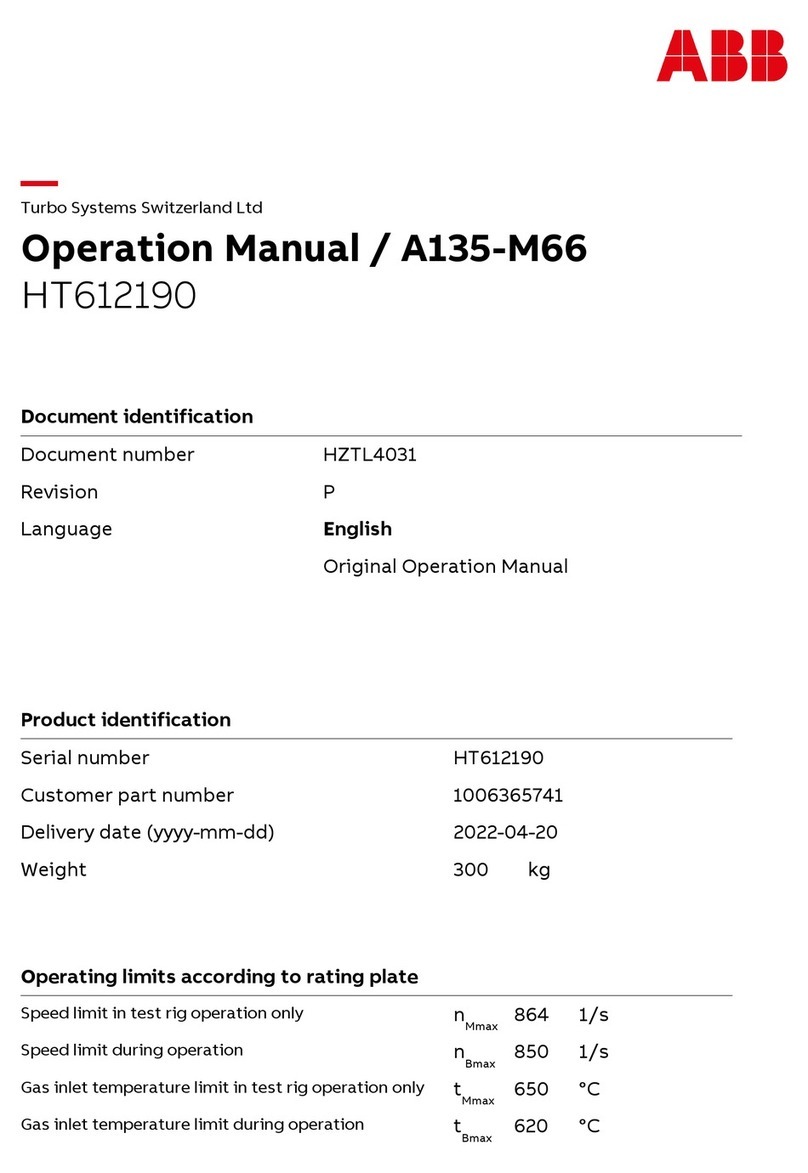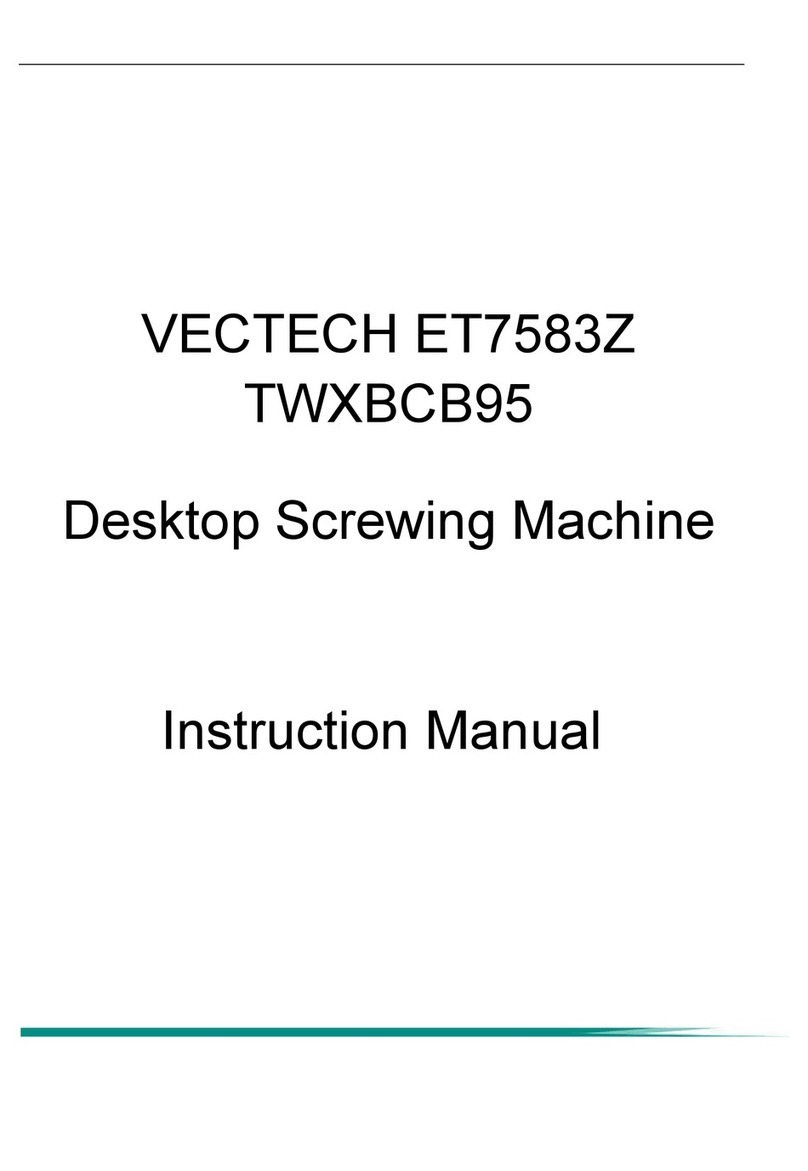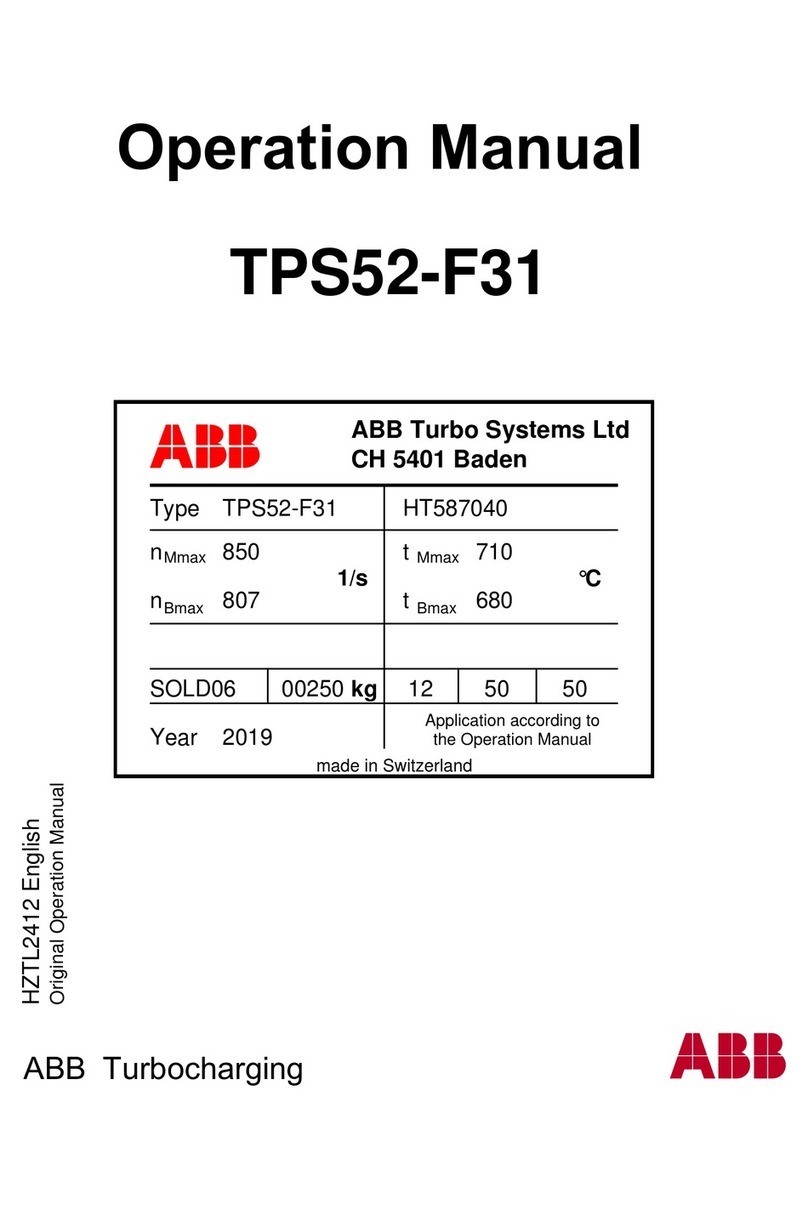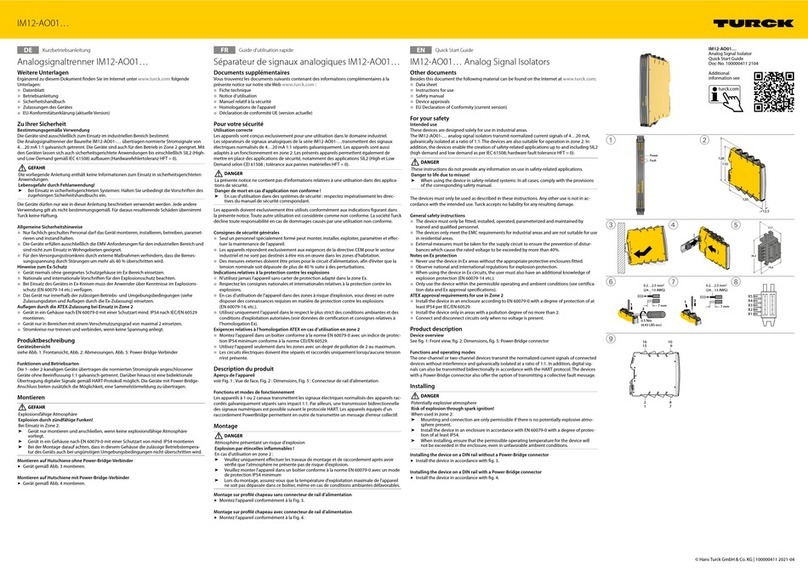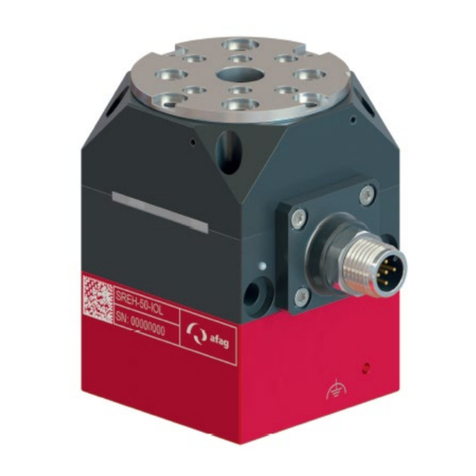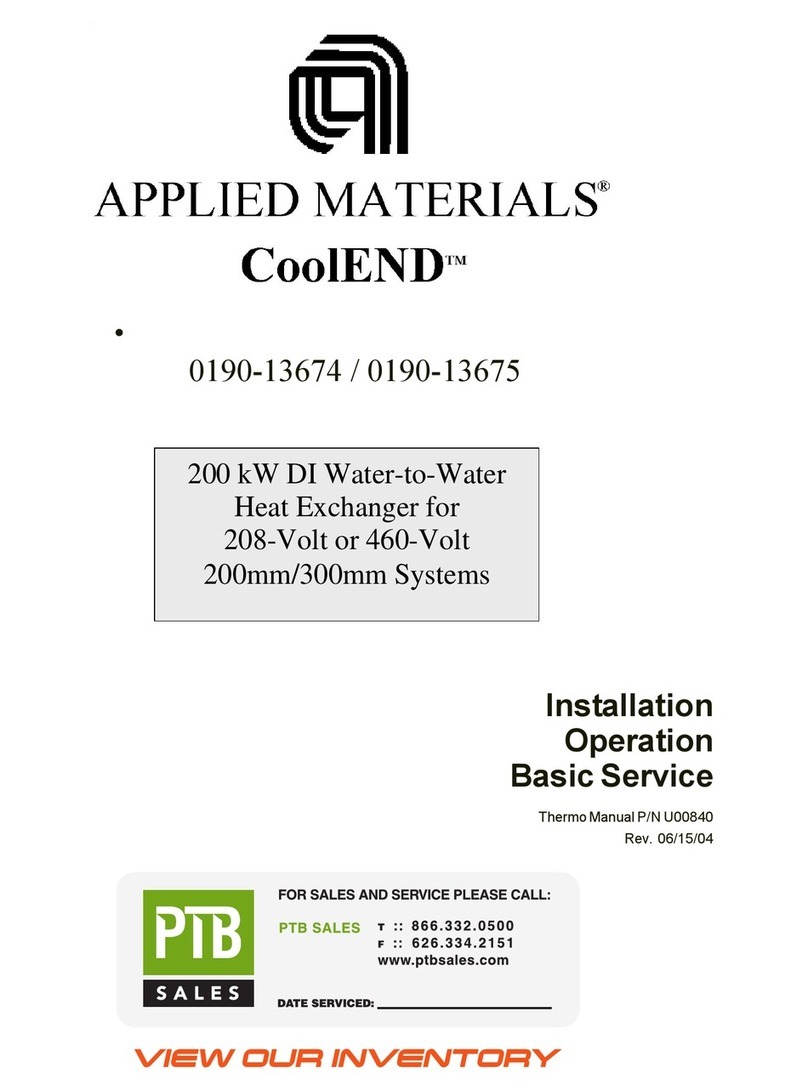Green&Cool Mistral Installation and operation manual

1
10/12/2012/PRT/REV2
Operating & Maintenance Instructions
Models: Mistral, Mistral CLU & CDU, Crystal, Crystal CLU & CDU, Sirocco, Sirocco CLU & CDU

2
10/12/2012/PRT/REV2
The machine identification plate is located at the front of the control cabinet.
Use the machine ID when corresponding with the manufacturer and service
provider.
This product meets the basic requirements of EU directives regarding health,
safety and the environment and is approved for sale within the EEA without further requirements.

3
10/12/2012/PRT/REV2
Figure 1: Note that the unit is delivered with a protective charge.
Figure 2: Note the warning!

4
10/12/2012/PRT/REV2
Table of Contents
1Introduction..................................................................................................................................................... 6
1.1 Important information............................................................................................................................ 6
1.2 Carbon dioxide ...................................................................................................................................... 7
2Delivery........................................................................................................................................................... 8
3Damaged goods............................................................................................................................................... 8
3.1 Missing goods........................................................................................................................................ 8
3.2 Claim settlement.................................................................................................................................... 8
3.3 Storage................................................................................................................................................... 9
4Safety ............................................................................................................................................................ 10
4.1 Handling.............................................................................................................................................. 11
4.2 Dimensions and weights...................................................................................................................... 12
5Installation..................................................................................................................................................... 13
5.1 Location............................................................................................................................................... 13
5.2 Connecting wiring & piping................................................................................................................ 14
5.2.1 Units connected to fluid systems..................................................................................................... 15
5.2.2 Pipe system ..................................................................................................................................... 15
5.3 Installing rupture discs and pressure relief valves ............................................................................... 17
5.3.1 Rupture disc .................................................................................................................................... 19
5.4 Commissioning.................................................................................................................................... 20
5.4.1 Pre start inspection.......................................................................................................................... 20
5.4.2 Maintenance instructions................................................................................................................. 20
5.4.3 Pressure testing................................................................................................................................ 21
5.4.4 Dehydrating circuits........................................................................................................................ 21
5.4.5 Oils.................................................................................................................................................. 21
5.4.6 Fan control ...................................................................................................................................... 22
5.4.7 Presetting control systems............................................................................................................... 22
5.4.8 Start-Up........................................................................................................................................... 22
5.5 Filling with oil & refrigerant ............................................................................................................... 22
5.5.1 Evacuation and filling oil................................................................................................................ 22
5.5.2 Filling refrigerant ............................................................................................................................ 23
5.6 Follow-up inspection........................................................................................................................... 24
5.6.1 Checks immediately after start-up................................................................................................... 24
5.6.2 Actions after start-up....................................................................................................................... 25
5.6.3 First service checks: 500 hours ....................................................................................................... 25
6System description, CO2refrigeration plant and components....................................................................... 26
7Green Co2ntrol control system...................................................................................................................... 27
8Shutdown ...................................................................................................................................................... 27
8.1 Preparations for shutdown................................................................................................................... 28
8.2 Restart.................................................................................................................................................. 28
9Basic maintenance of CO2 plant.................................................................................................................... 29

5
10/12/2012/PRT/REV2
9.1 Regular checks..................................................................................................................................... 29
9.2 Cleaning............................................................................................................................................... 29
9.3 Scheduled plant maintenance .............................................................................................................. 30
9.4 Spare parts ........................................................................................................................................... 30
9.5 Maintenance checks............................................................................................................................. 30
9.6 Checking the oil level.......................................................................................................................... 31
9.7 Checking compressor oil pressure....................................................................................................... 31
9.8 Replacing filter dryers (DH)................................................................................................................ 32
9.9 Oil separator ........................................................................................................................................ 32
9.10 Replacing oil separator filters (OS)..................................................................................................... 33
10 Troubleshooting....................................................................................................................................... 34
Appendix 1a.......................................................................................................................................................... 36

6
10/12/2012/PRT/REV2
1Introduction
Thank you for choosing a Green & Cool product. We hope that it will meet your
expectations for a long time to come.
The CO2used in the installations occurs as a by-product in the production of
industrial gases. This means that the refrigerant used in the unit has no
additional environment impact.
1.1 Important information
This manual contains descriptions of procedures such as installation, operation
and maintenance. It is important to read it carefully before installing the
refrigeration unit. Therefore, keep the instructions in a safe place throughout the
service life of the unit. Contact Green & Cool for additional copies.
In order for supplier liability for defects to apply, the enclosed installation and
commissioning instructions must be strictly adhered to and a commissioning
protocol submitted to the supplier immediately after commissioning, together
with parameter lists and design documentation for expansion valve nozzle
dimensions. Regular scheduled service items must also be completed. This is to
ensure as far as possible that the plant is not subjected to operating conditions
outside its normal operating range or design requirements based on the tender
enquiry documentation. Examples of such conditions are hydraulic shock, oil
pressures, oil temperatures, evaporation temperatures and condensation
temperatures that are outside the operational range of the plant.
The symbol indicates information that must be followed to avoid
serious injury or property damage.
The symbol means that the paragraph contains information that merits
careful consideration.
Green & Cool disclaims any liability for damage or injury arising from incorrect
handling of the equipment supplied.

7
10/12/2012/PRT/REV2
1.2 Carbon dioxide
CO2is an extremely efficient refrigerant which EN378-1 regards as having low
toxicity and is non flammable. It is regarded as a ‘safe’ refrigerant and belongs
to the group A1/L1.
However CO2is toxic at high concentrations and since it is odourless and
colourless the use of a suitable detector is necessary when working in confined
or unventilated areas. The concentration of CO2in the lungs controls breathing
and high concentrations can lead to unconsciousness and even death.
370ppm (0.037%)
normal concentration in the atmosphere
5000ppm (0.5%)
recommended level for upper limit on CO2 detector
20,000ppm (2%)
short exposure will not entail problems
30,000ppm (3%)
discomfort, breathing difficulties, increased heart rate,
headaches, dizziness
100,000ppm (10%)
unconsciousness and death
Since CO2 can only exist in the solid and vapour phase at atmospheric pressure
(dry ice) at a temperature of -79.9C; sublimation temperature; care must be
taken to avoid cold burns by contact with the ice or vapour. Additional care
should be taken when handling liquid CO2especially when charging or
removing refrigerant from the system where suitable gloves and eye protection
should be worn.
NOTE: Carbon dioxide is heavier than air and tends to settle at floor level.
Ensure good ventilation in the plant room. The plant room must also be
equipped with CO2alarms, and personal detectors should also be worn.

8
10/12/2012/PRT/REV2
2Delivery
The equipment is inspected before it leaves the factory. The consignee is
responsible for checking that all equipment items ordered have been delivered,
that they are undamaged and match what was ordered.
Check the condition of the goods and packaging on taking delivery.
Cross-check quantities to make sure they correspond with the details on the
waybill.
Take care of the manuals and CE document delivered with the goods. This is
especially important in respect of refrigeration unit auxiliary equipment such
as evaporators and gas coolers.
3Damaged goods
Procedures for damaged goods conform to local regulations. The example below
applies to Sweden.
Take delivery of the goods but never sign the waybill without first making a
note in the consignee’s signature box. If possible take a photograph of the
damage and submit it together with the claim; also try to limit the damage as far
as possible.
If the damage was not discovered until unpacking (damage hidden by
packaging) it must be reported to the shipper within seven (7) working days of
receipt for the claim to be processed. Damaged goods may not be returned, sold
or repaired without first contacting the shipper’s claims department.
3.1 Missing goods
Make a note on the waybill before signing for delivery. Contact the shipper. If
the missing goods are not correctly delivered within 30 days (60 days outside
Sweden) they are considered lost (local regulations).
3.2 Claim settlement
The customer is responsible for preparing the claim and providing evidence of
the amount concerned, which usually entails producing the following
documentation:
Notification of damage (loss)

9
10/12/2012/PRT/REV2
Waybill or packing list
Commercial invoice between the seller and purchaser, or other
documentation that verifies the value of the goods.
Repair invoice, or an invoice for a replacement delivery or spare part.
Any other documentation, such as photographs, considered important for the
correct settlement of the damage or loss.
3.3 Storage
If the unit will be stored before installation it must be protected from moisture in
max/min temperature conditions of +50°C to –30°C.

10
10/12/2012/PRT/REV2
4Safety
Note that for protection the plant is factory filled with nitrogen at 5 bar: handle
valves and pipe fittings with care.
This plant conforms with applicable health and safety legislation.
It is important that the equipment be installed and commissioned by qualified
personnel in compliance with EN 378, EN 14276, EN 13136, EN 13313, EN
60204 and EN 60335 standards where applicable, EU directives, generally
recognized safety regulations, best technical practice, local ordinances including
such ordinances as may be introduced due to advances in technology and
attendant changes to regulations. The following must be complied with for the
plant to function in a safe manner:
Do not carry out repairs or maintenance unless you are classified by your
employer as being competent to work on CO2refrigeration systems and
have received suitable training.
Pay careful attention to instructions, decals and notices.
Never weld or solder pressurized components without fully emptying the
system.
Be aware of rotating fans in plant with integrated gas coolers or forced-
draught oil coolers; never operate the equipment without all the fan
guards installed.
Make sure no cables or other electrical components are damaged during
repairs and maintenance.
Operate manual valves with care to prevent pressure surges in the system.
Always switch off at the main switch before performing any repairs or
maintenance.
Pressure vessels are fitted with rupture discs and/or pressure relief valves.
If a rupture disc bursts it is important to ascertain the cause. It is also
extremely important that the burst disc be replaced with a new one
designed for the same pressure and temperature ranges; affix the rupture
disc data plate to the rupture disc holder to prevent any confusion.
Make sure new components have the same specifications as those
replaced during service and maintenance work.
Ensure all tools and fittings such as gauges, manifolds, flexible hoses,
bottle connectors, charging devices etc have the correct pressure rating for
the high pressure associated with CO2.

11
10/12/2012/PRT/REV2
The plant is pressure tested after manufacture and factory filled with
nitrogen at 5 bar. Check the pressure in the plant before it is connected.
The above items do not comprise a complete list. Always exercise due care and
caution when working on the plant.
Contact Green and Cool, or personnel accredited by the company, without
fail for advice should the slightest uncertainty exist regardless of the type of
repair or maintenance.
Bear in mind that refrigeration units that use CO2as the refrigerant operate at
significantly higher pressure than conventional HFC-HCFC refrigeration
installations. It is therefore important to exercise caution and ensure that only
authorized personnel who are familiar with the technology perform repairs and
maintenance to the unit or the refrigeration system.
4.1 Handling
Lifting may only be performed using slings attached at marked locations on the
frame, or forklift forks under the frame.
Check that the lifting equipment is in good condition and able to handle the
weight of the equipment with a safe margin.
Avoid tilting the unit during handling as the compressors are filled with oil.
The plant’s internal components such as hoses, pipes, etc. must never be used for
lifting or purchase as only the outer frame is designed for this.

12
10/12/2012/PRT/REV2
4.2 Dimensions and weights
Dimensions and weights vary greatly between models and equipment; contact
Green & Cool for precise data.

13
10/12/2012/PRT/REV2
5Installation
Disconnect the CPU from the unit’s electrical system before electric
welding is carried out on the unit.
When soldering is carried out on refrigeration unit piping, purge the pipes
with nitrogen in order to prevent the formation of deposits that may spread
and cause damage to the system.
5.1 Location
In order for the plant to enjoy a long, problem-free life it should be located in a
dry, dust-free space with good ventilation all around. The plant must be placed
on a horizontal surface or be levelled with the aid of a spirit level in order to
safeguard proper compressor lubrication. There are feet with adjuster screws at
the corners of the frame.

14
10/12/2012/PRT/REV2
The plant should be located to give safe and easy access for service and
maintenance. Ideally it must be possible to access the plant from all directions.
The recommended access space around the plant is 1200 mm at the front and
700 mm at the other three sides.
Because the plant contains sensitive, advanced electronics it may not be located
in an unheated space where there is a risk of control cabinet temperature
dropping below 0°C.
Remember: the floor must be stable and able to bear the weight of the unit.
5.2 Connecting wiring & piping
The plant must be connected according to the accompanying PID drawing –the
corresponding pipes on the plant are also marked. The standard diameters used
on CO2pipes are 12 mm, 16 mm, 22 mm, 28 mm, 35 mm, 42.4 mm, 48.3 mm,
60.3 mm and 76.1 mm; all refrigerant pipes are in stainless steel.
Never install or remove threaded hose or pipe fittings without using a counterhold,
otherwise there is a risk of damage to welds or solders.
Take great care when installing the plant to ensure pipe connections and electric
cables do not subject the unit to stress and that pipes and cables are run in such a
way that vibrations cannot be transmitted through them. If anti-vibration mounts
are used, connections must be suitably adapted through the use of flexible pipe
fittings.
Locate the temperature transmitter TT21outdoors immediately downstream of
the gas cooler outlet to allow the plant to operate stably (see PID diagram).
This transmitter is factory fitted to plant with liquid-cooled gas coolers, CLU
and CDU units.
Locate temperature transmitter TT62in a shaded position sensing the air
temperature onto the gas cooler. The transmitter should not be located so close
to the gas cooler that it risks being affected by it, nor should it be exposed to
direct sunlight.
1Supplied separately with the plant, or fitted to plant with liquid-cooled gas coolers.
2Supplied separately with the plant.

15
10/12/2012/PRT/REV2
5.2.1 Units connected to fluid systems
Untreated water must never be used as a cooling or heating medium in units
connected to secondary fluid systems as this can cause the plant to be blocked
by corrosion or algae, or suffer bursts due to freezing. Green & Cool
recommends the use of ready-mixed fluids based on propylene glycol or
ethylene glycol. Determine the temperature range the plant will operate in and
check the data sheet to calculate the optimum concentration.
The installation engineer responsible must ensure that the pipe system to which
the plant is connected is as free from contamination as possible and that said
pipe system is properly vented before the plant is commissioned.
Also, take great care when making the connections to ensure no swarf, dirt or
similar enters the system.
Water connections to heat exchangers must be fitted with valves to allow heat
exchanger isolation and the connection of equipment for flushing heat
exchangers free from deposits. The frequency of these system flushes depends
on the quality of the fluid in the system.
Green and Cool disclaims all warranty liability for damage arising from the
disregard of the above.
5.2.2 Pipe system
Because CO2has a higher energy density than comparable conventional
refrigerants it has the advantage of allowing the use of narrower –and thus
cheaper –pipe systems. However, it is of the utmost importance that pipe
system design be adapted to suit the specific plant in order to exploit the plant’s
full capacity.
The plant releases small quantities of oil into the pipe system, and to prevent oil
accumulations from causing pipes to sag, pipe runs must be properly clamped
according to current standards and refrigeration best practices.
When soldering or welding is carried out on refrigeration unit piping, purge
the pipes with the requisite inert gas in order to prevent the formation of
deposits that may spread and cause damage to the system.

16
10/12/2012/PRT/REV2
Because refrigeration plants filled with CO2work at higher pressures than
many other types it is extremely important that they be connected to the
system in the correct manner.
Pipe fittings must be designed for the pressures concerned.
Compression fittings must be correctly installed. Avoid the use of
compression fittings where possible.
Should the slightest uncertainty exist concerning pipe system connection,
consult Green & Cool or the Green & Cool representative.

17
10/12/2012/PRT/REV2
5.3 Installing rupture discs and pressure
relief valves
The plant is supplied with its rupture disc and pressure relief valve connections
plugged.
Rupture discs, holders and pressure relief valves are supplied separately with
the plant. The discs are installed (description under 5.3.1) and the pressure relief
valves connected to the outlet pipe once the machine is connected and the
system has been pressure tested.
Check that these components also form a good seal once the system is
pressurized.
Affix rupture disc data plates clearly visible next to their respective holders in
order to avoid the risk of a burst disc being replaced by one with a higher rated
pressure.
Rupture discs/pressure relief valves for the relevant pressures should be fitted as
standard at the following locations: Note that plant may have optionally lower
threshold pressures; check this carefully.
Oil separator
120 bar:3
Hot gas exchanger
120 bar: When a large hot gas exchanger with separate rupture disc/pressure
relief valve is used
Refrigerant liquid receiver4
80 bar
Liquid separator (a.k.a. suction accumulator/oil reservoir)
60 bar/80 bar
3The gas cooler’s rated pressure determines plant pressure safety thresholds and pressure relief valve lifting
pressures; however, max lifting pressure is 120 bar.
4If plant components e.g. evaporators and pipelines have a lower pressure class than the pressure vessel, the
latter must be protected at the lower pressure class.

18
10/12/2012/PRT/REV2
Install pressure safety devices by fitting the T piece between the rupture disc
holder and pressure relief valve as illustrated below.
The T piece is provided with a test point to enable rupture disc status checks by
connecting the enclosed pressure gauge.
Always connect a pressure gauge to the test point when checking or replacing
pressure relief valves; if the gauge registers a pressure, the rupture disc has
burst. Depressurize the system before removing the pressure relief valve.
Figure 3: The figure shows a rupture disc holder and pressure relief valve connected by a T piece.
Always confirm that the space between the rupture disc holder and
pressure relief valve is not pressurized before any attempt is made to
remove the pressure relief valve.
Rupture disc holder
Pressure gauge
connection
Pressure
gauge
Pressure relief
valve

19
10/12/2012/PRT/REV2
5.3.1 Rupture disc
Before replacing a pressure relief valve or rupture disc, make sure the system
section they protect is not pressurized or hot.
Determine the cause of a burst rupture disc before replacing it.
Install or replace burst rupture discs according to the following procedure:
1. Check that the sealing surfaces are undamaged and wipe them dry with a
soft, clean rag.
2. Check that the new rupture disc has the same rated pressure as the previous
disc and that it is the right type for the location concerned.
3. Place the rupture disc under the holddown ring with the convex side facing
the outlet, and place them in the hole on the outlet side (see illustration). The
flat side of the ring must face upwards.
4. Tighten the pressure section to the correct torque setting; the latter is
specified on the rupture disc data plate. Use a torque wrench.
5. Owing to their simple design, rupture discs are almost maintenance free.
However, they should be inspected visually at least once a year.
Figure 4: The figure shows a rupture disc installed in its holder

20
10/12/2012/PRT/REV2
5.4 Commissioning
5.4.1 Pre start inspection
Once the plant is installed and ready to operate the checklist in appendix 1a
must be followed. Before Start-up.
Make sure that all fasteners are fully tightened on flanges, hoses and cables as
shocks and vibrations may occur during transportation that cause screws and
bolts to loosen. For the same reason, check for damage in the pipe system.
Make sure hoses are not in contact with metal components otherwise
compressor vibrations may cause the hoses to chafe.
Check that no equipment was damaged during assembly, that the plant is
gastight, fluid tight and free from leaks and that all connections are properly
welded or tightened.
Check that heat-transfer and heat-recovery systems are properly connected in
liquid-cooled systems, that all pumps run and all flows are set according to plant
specifications. Make sure heat-transfer and water systems are properly filled and
thoroughly vented.
Make sure the plant is connected to the correct voltage and that it is properly
protected (fuses, circuit breakers). Check that motor circuit breakers are
properly set in relation to the compressor rating. The installation engineer must
measure motor amperages, check motor protection and set circuit breakers at
commissioning.
Make sure all electrical connections are properly tightened.
Check that all refrigeration unit control system parameters are correctly set and
expansion valves correctly adjusted, that the correct nozzles are used in the
refrigerated object relative to cooling capacity, and that the setpoint is in
accordance with operating conditions.
Check that the gas cooler fans are able to rotate freely.
Check that the installation site is cleaned after installation.
5.4.2 Maintenance instructions
The following instructions must be complied with at all times:
Maintenance and repairs may only be carried out with the main switch in the
OFF position and after any fans have come to a complete stop.
Carry out tests with safety in mind so that personnel or equipment do not suffer
injury or harm.
This manual suits for next models
8
Table of contents
Popular Industrial Equipment manuals by other brands
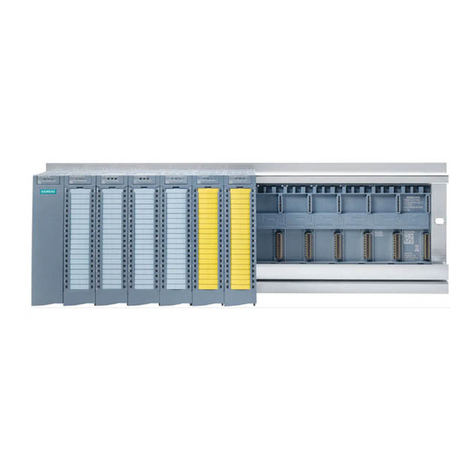
Siemens
Siemens Simatic S7-1500 manual
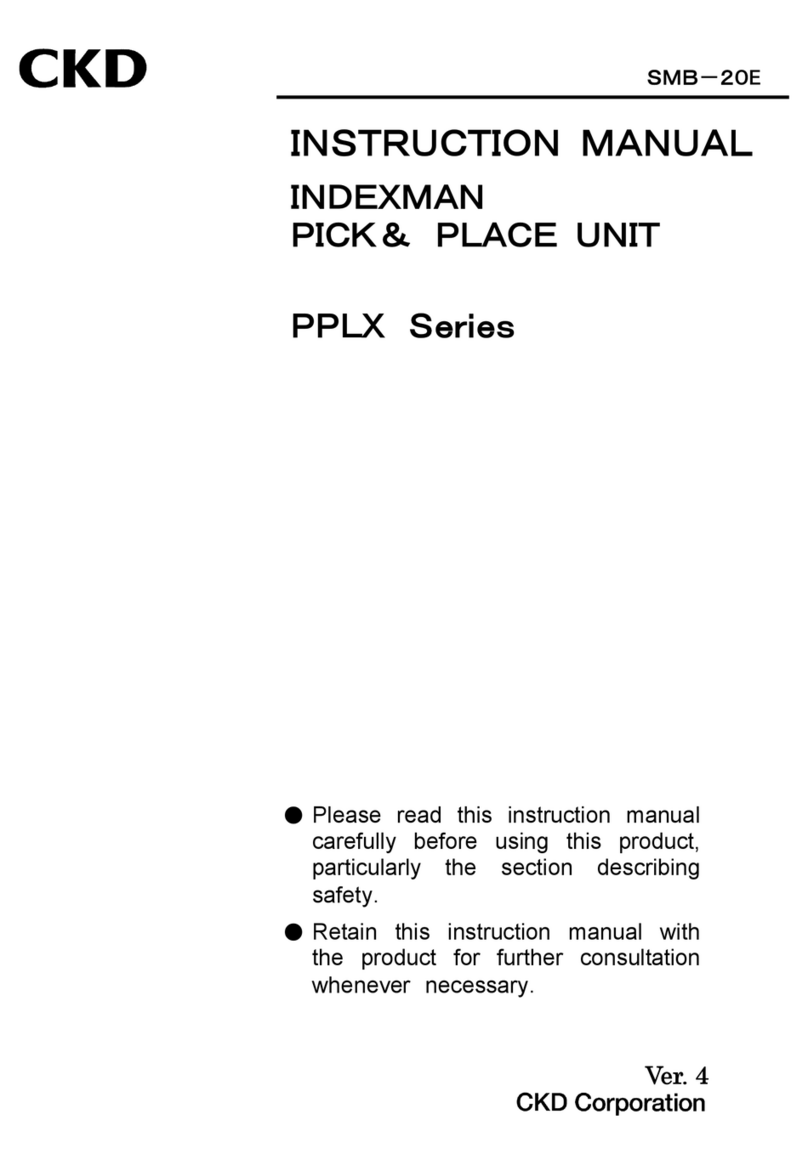
CKD
CKD INDEXMAN PPLX Series instruction manual
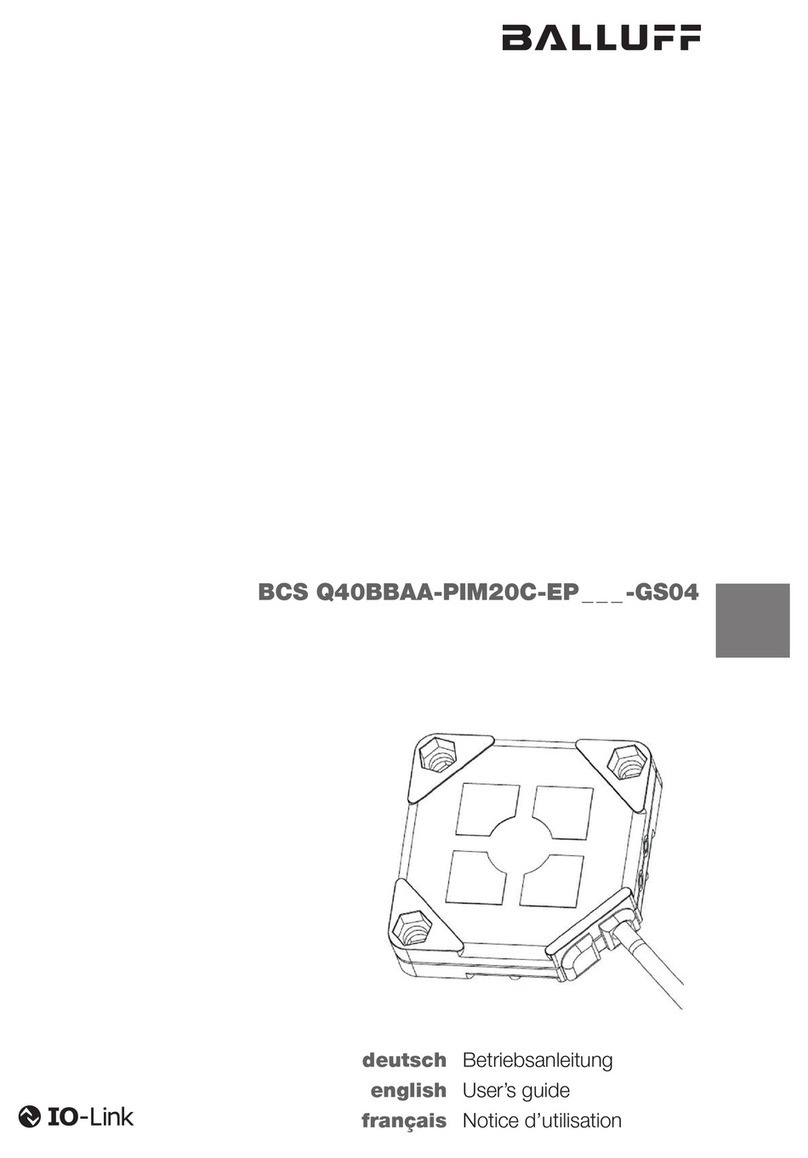
Balluff
Balluff BCS Q40BBAA-PIM20C-EP-GS04 Series user guide

Hyundai power products
Hyundai power products HYC5030 user manual

HOLZ-HER
HOLZ-HER 1962 operating instructions
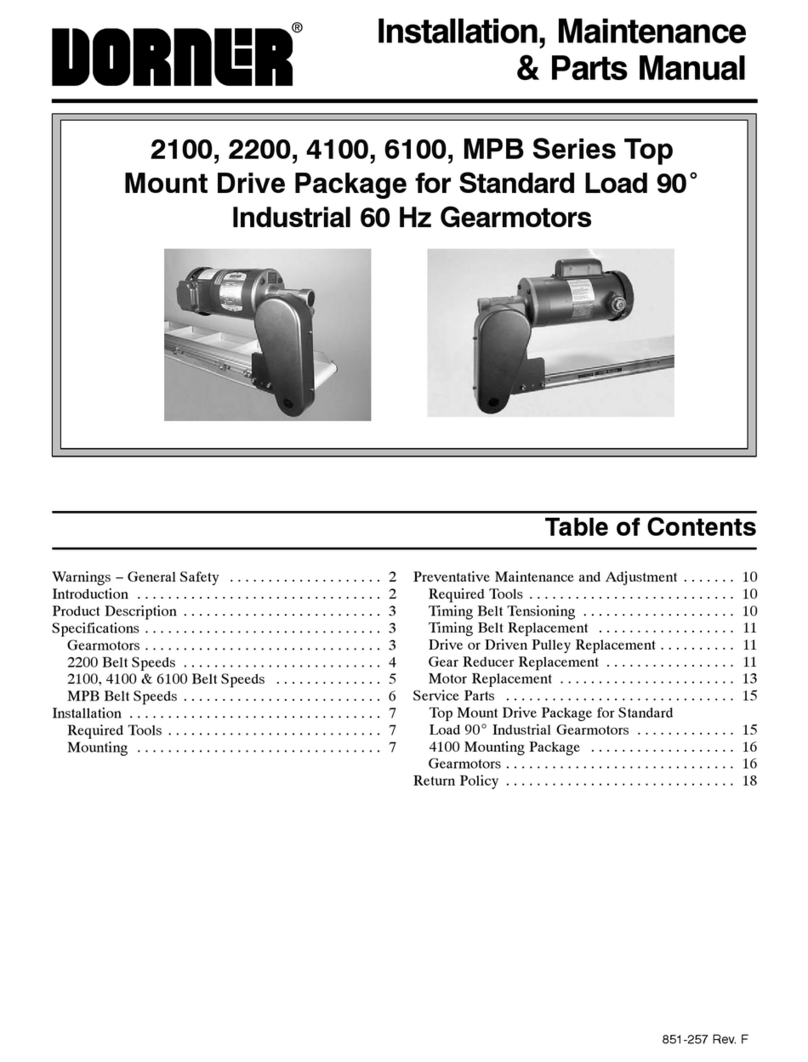
Dorner
Dorner MPB 2100 Series Installation, maintenance & parts manual
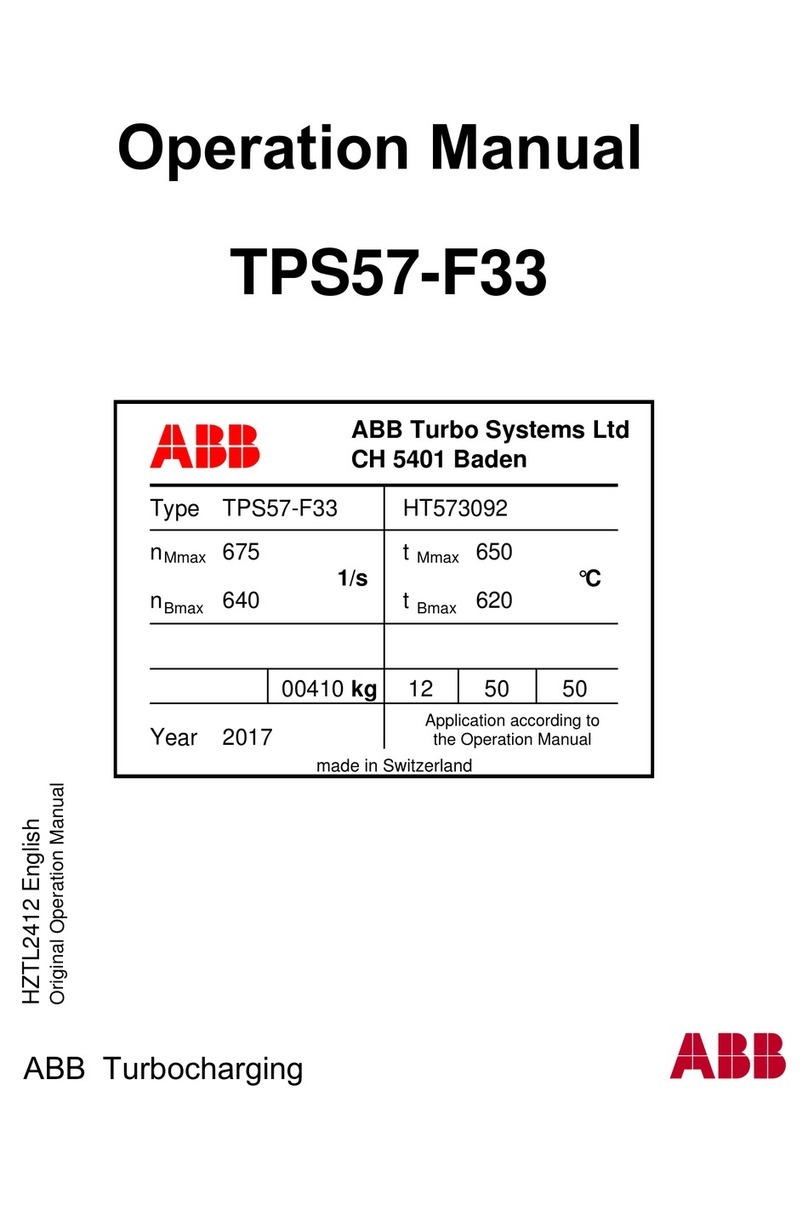
ABB
ABB TPS57-F33 Operation manual

ABB
ABB HT573736 Operation manual
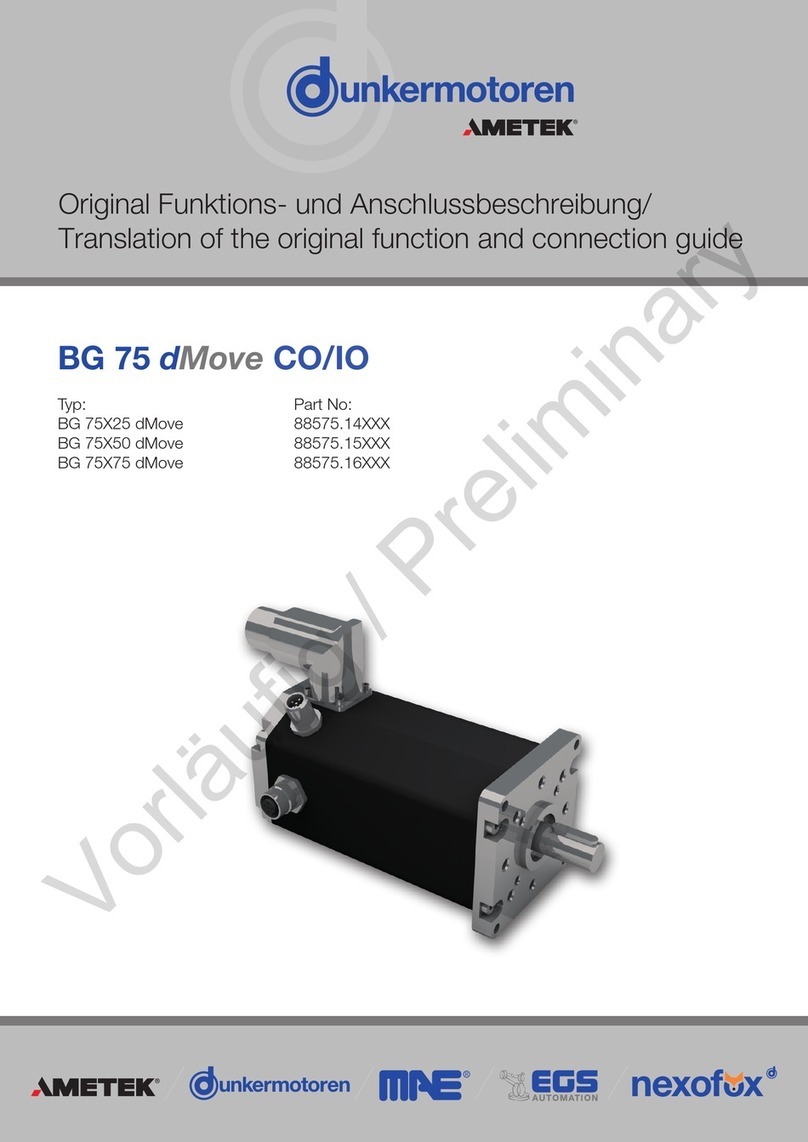
dunkermotoren
dunkermotoren AMETEK BG 75 dMove Translation of the original function and connection guide
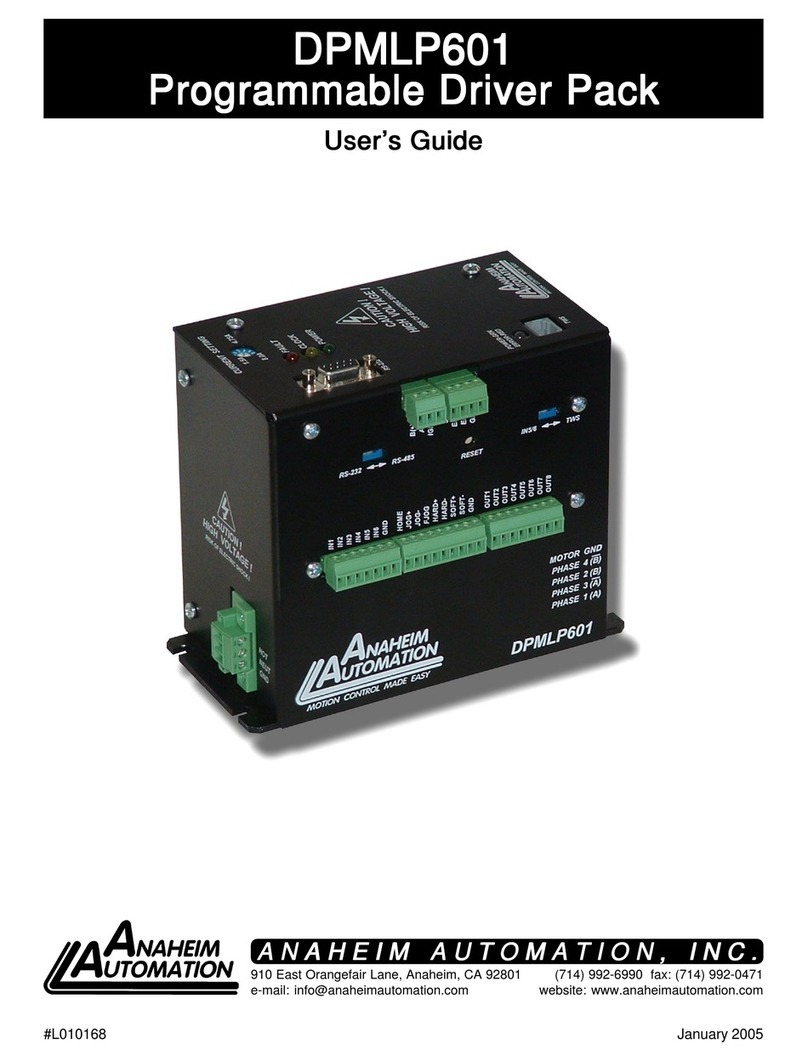
Anaheim Automation
Anaheim Automation DPMLP601 user guide
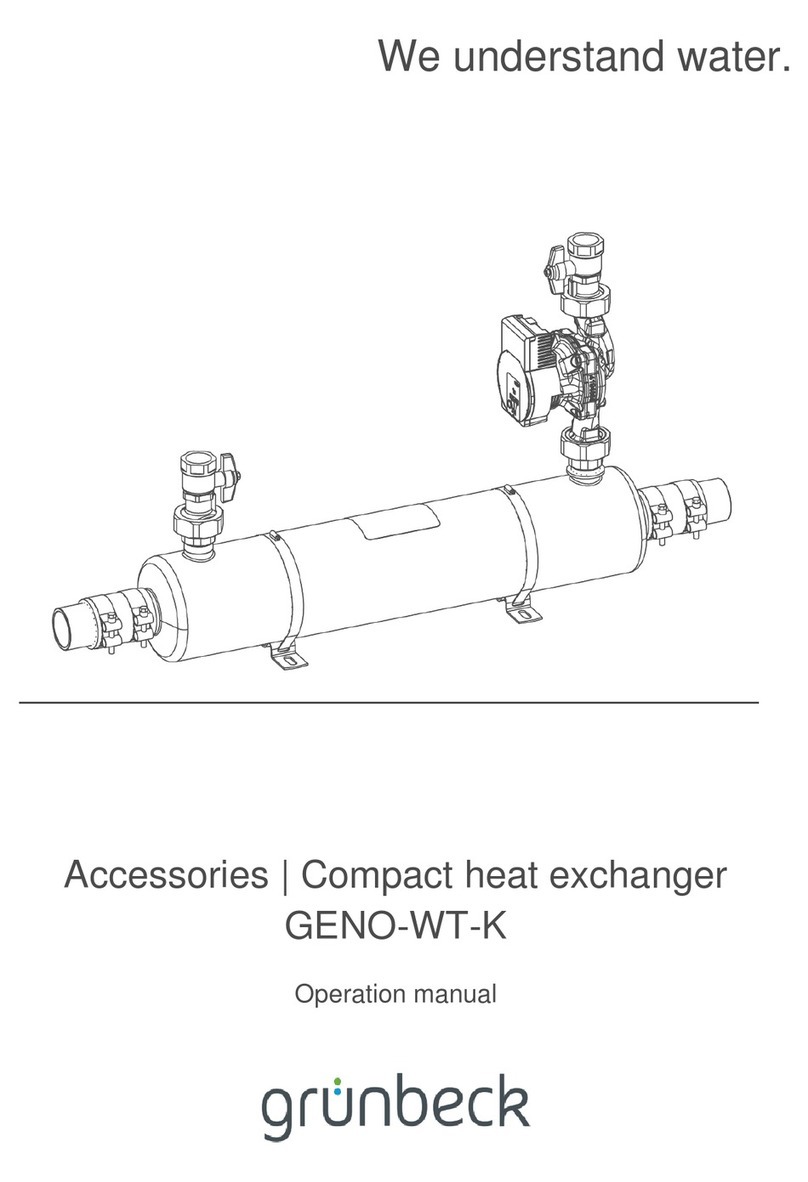
Grunbeck
Grunbeck GENO-WT-K 42 Operation manual
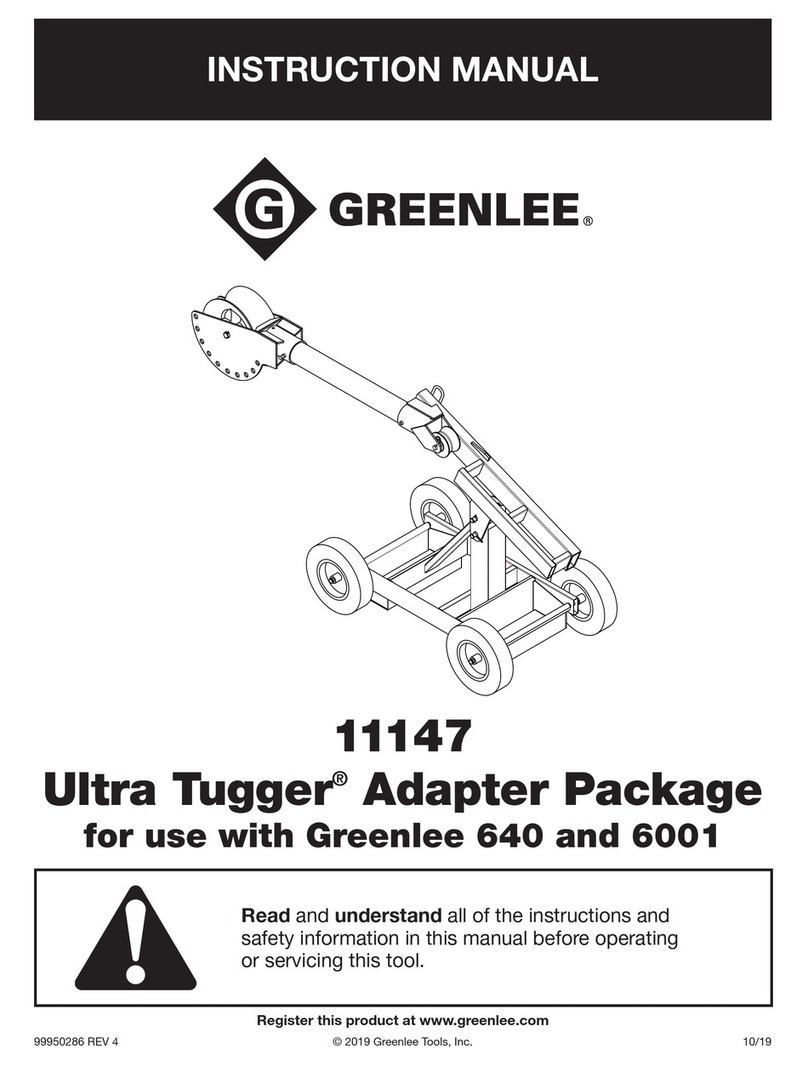
Greenlee
Greenlee Ultra Tugger 11147 instruction manual
